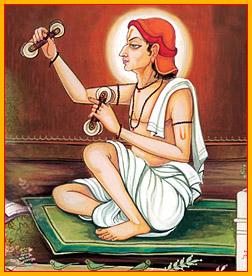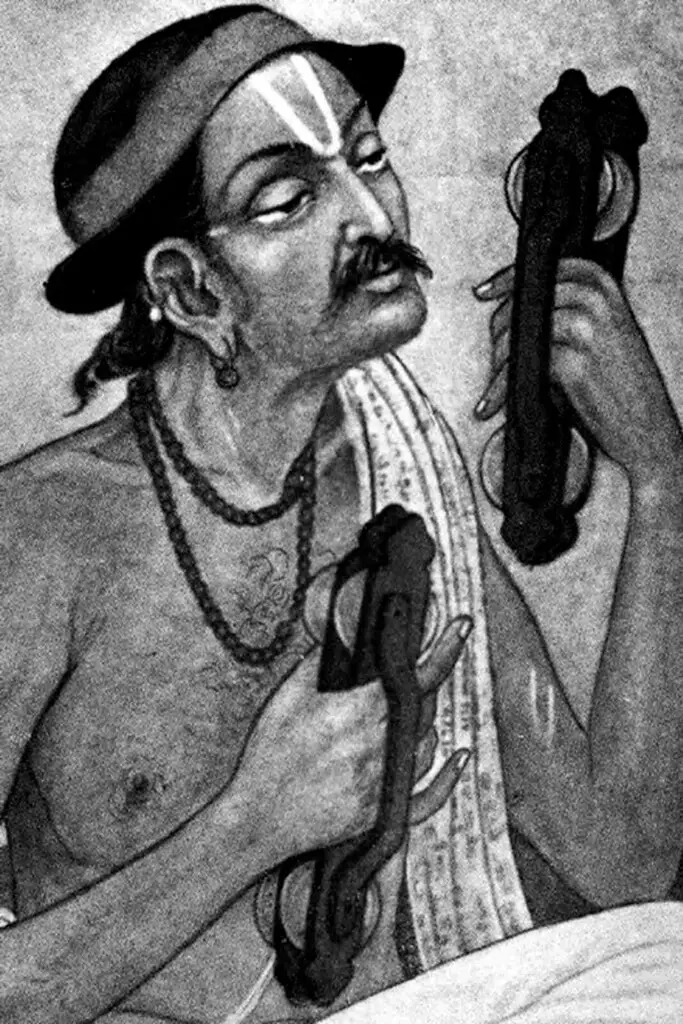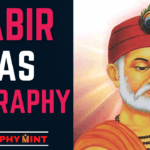Table of Contents
Narsinh Mehta

Introduction:
Narsinh Mehta is hailed as the Adi Kavi (first poet) of Gujarati literature. His contributions to Gujarati literature are numerous and his works are written with extreme simplicity. Learn more about his biography, life, works, etc.
Life of Narsinh Mehta
Narsinh Mehta was born in 1414 in the town of Talaja, in the Bharuch district of Gujarat, India. He was the son of the local barber, and he received only a basic education. He married when he was quite young, and his wife bore him a son. Tragedy struck when Mehta’s son died at a young age, leaving the poet heartbroken. This tragedy is said to have led Mehta to devote his life to God.
Contributions to Gujarati Literature

Narsinh Mehta is considered one of the most important figures in Gujarati literature. His compositions helped to establish the Vaishnava school of poetry in Gujarat. He is best known for his simple, forthright, and soulful compositions in the vernacular language. Many of his works were composed in the form of bhajans, which are devotional songs in praise of the Hindu god Vishnu. Mehta’s poetry is characteristically simple and direct, and is notable for its emotional intensity. He is also credited with introducing the concept of bhakti, or devotional love, into Gujarati literature.
Narsinh Mehta Controversies
Narsinh Mehta was not without his controversies. There were several times he got into trouble with the authorities for his scathing and provocative poetry. He was even imprisoned on a few occasions. However, nothing could diminish his standing in the eyes of the people. He was and is revered as a saint and a master of Gujarati poetry.
Narsinh Mehta Books

4. Narsinh Mehta Books Narsinh Mehta’s collected works were first published in 1930. A second edition appeared in 1945, and a third in 1966. Narasinh Mehta’s complete works were compiled in six volumes, and published by the Gujarat Vidyapith in Ahmedabad. The first volume was published in 1930, the second in 1933, the third in 1936, the fourth in 1941, the fifth in 1946, and the sixth in 1966.
Characteristics of Narsi Bhajan
Narsinh Mehta’s poetry is marked by its simple, direct, and emotive language, as well as its spiritual nature. His works deal with a variety of themes, including love, devotion to God, and the joys and sorrows of life. He is also celebrated for his bhajans, or religious songs, which are considered some of the best ever written in Gujarati. Narsinh Mehta’s compositions are marked by their simple lyrics and powerful expressions of faith.
Conclusion:
Narsinh Mehta was a poet and saint who lived in the 15th century and is known for his devotional poems in Gujarati. His contribution to literature includes his Bhajans, which were later compiled into the Sanskrit treatise Narsinh Mehtani Vivah. In history of Indian literature, he is also credited with introducing a new form of religious poetry called ‘Bhakti’. He sang about Lord Krishna’s life on Earth in 49 songs, collectively known as Vaishnava Pad (Vaishnav Jan To).





